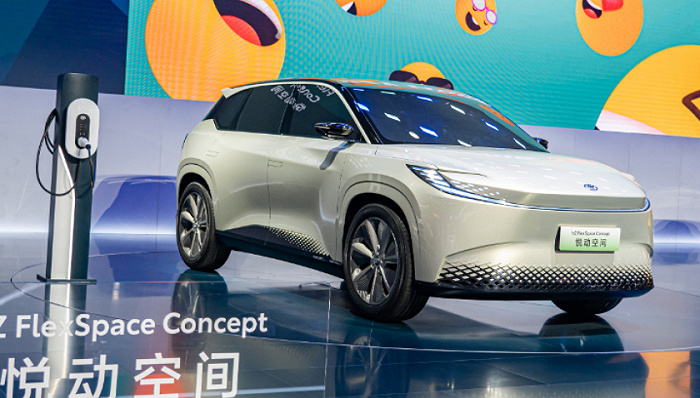
In 2023, Toyota adjusts its electric and intelligent strategy in China

IEM by TOYOTA
On July 31, Toyota Motor Corporation announced that in order to provide competitive and satisfying electrification products to the Chinese market where the proportion of electric vehicles is gradually expanding, it will further strengthen its local research and development of intelligent and electrification technologies in China.
Toyota will change the name of its research and development base in China, and at the same time adjust the collaboration method of its joint venture R&D personnel.
Toyota’s largest R&D base in China, “Toyota Motor R&D Center (China) Co., Ltd.” will be renamed as “Intelligent ElectroMobility R&D Center by TOYOTA, IEM” on August 1.
It is understood that IEM has invested a total of 689 million US dollars since its establishment.
In addition to the joint ventures Yifeng and Guangfeng, Chinese companies including Ningde Times, BYD, SinoHytec, NavInfo and Pony.ai are also partners of Toyota.
The cooperation involves but is not limited to pure electric research and development, hydrogen energy promotion, intelligent development, autonomous driving and other fields.
In the future, engineers from the R&D centers of Toyota’s three joint ventures in China (FAW Toyota Motor Co., Ltd., GAC Toyota Motor Co., Ltd., and BYD Toyota Electric Vehicle Technology Co., Ltd.) will break organizational barriers and join the R&D project led by IEM by TOYOTA middle.
In addition to the joint venture in China, Toyota subsidiaries Denso Denso and Aisin Aisin will also participate in the research and development activities of IEM by TOYOTA, and the two will be responsible for the research and development of electrified powertrains.
Toyota emphasized that in the future, electrified vehicles will still have multiple paths, and the power sources of models will include BEV, PHEV, HEV, FCEV and other solutions.
In terms of intelligence, Toyota will accelerate design and development by utilizing space design and AI technology to achieve a smart cockpit with better user experience, as well as automatic driving technology and advanced safety technology that are more in line with China’s actual road conditions.
In terms of specific measures, in order to enhance competitiveness, Toyota will adopt measures in the fields of “expanding local suppliers”, “improving parts design” and “reforming production technology and manufacturing processes” in the field of electrification and intelligence to achieve Substantial reduction in manufacturing costs.

Chinese auto market
Tatsuro Ueda, director of Toyota China, said in the announcement that the Chinese auto market is developing at an unprecedented speed, and Toyota will go all out in the Chinese market to speed up adaptation to the new market through changes in working methods/awareness.
Toyota will promote local research and development with IEM by TOYOTA as the core, and rapidly develop and provide competitive products that can satisfy Chinese customers.
In the future, Toyota’s research and development achievements and experience in China will not only be applied to the Chinese market, but will also feed back the global market.
Data show that in the first half of this year, Toyota’s global sales were approximately 4.9 million vehicles, a slight increase of 5.5% year-on-year; however, there was a 2.8% decline in the Chinese market, with a total sales of 879,400 vehicles.
Among them, the monthly sales volume in June was 175,000, a year-on-year decrease of 12.8%, which was the first monthly decline in three months.
In terms of electric vehicle sales, Toyota sold a total of 46,200 pure electric vehicles (including the Lexus brand) globally in the first half of this year, but it still only accounted for less than 1% of Toyota’s global sales, of which the Chinese market contributed nearly half.
